As a parent looking to introduce your child to new foods, you might have heard about food chaining. But what exactly is food chaining? And how can you use it to improve your child’s nutrition?
Children are sometimes hesitant to try new things, especially food. It can be overwhelming for them to have a new experience. And even more overwhelming as a parent to make sure they are eating a well-balanced diet. So where do we start?
Food chaining might be your first step forward.
In this comprehensive post, we will break down the basic steps of food chaining, who it might be helpful for, and methods to ensure success. Plus, several realistic food chaining examples to use with your kids.
So let’s dive in!
What is food chaining?
Food chaining is a feeding method that uses gradual changes to eventually introduce new foods. This is done by slightly altering a child’s “preferred” food and getting progressively closer to a new food.
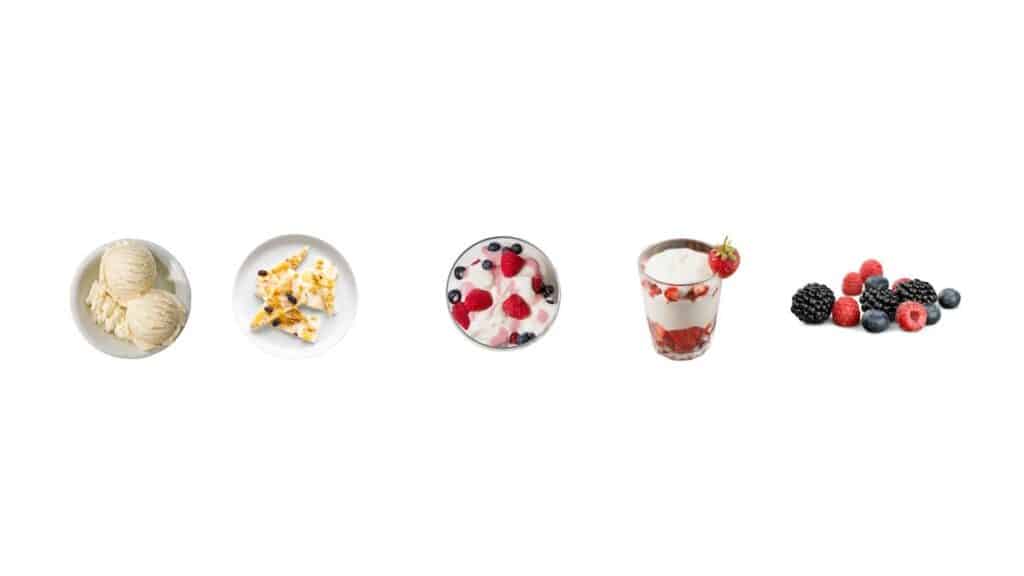
To make these subtle changes to your child’s current favorite foods, remember the 5 T’s of Food Chaining:
- Taste
- Texture
- Temperature
- Type (or brand)
- Time of Day
More about the 5 T’s later!
What is food chaining used for?
The main goal of food chaining is to expand a child’s palette and get them more comfortable eating new foods. It exposes them to new foods in a way that minimizes the overwhelming novelty of the experience.
This sets a child up to me more open to trying new foods and can foster a more healthy relationship with food for the rest of their life.
Without using strategies like this, picky eaters can wind up with very narrow selection of foods. This can lead to vitamin and mineral deficiencies, poor growth, constipation, and even behavioral issues (1).
When should you use it?
Food chaining can be used for all ages and developmental stages. Some signs that you might need to start food chaining include:
- Brand Necessity – your child refuses to try foods that are not a particular brand (ie. does not eat waffles unless they are Kellogg)
- Decreasing Number of Preferred Foods – if you’re noticing the number of “safe” or “accepted” foods start declining significantly, food chaining might help prevent more advanced picky eating
- Extreme Fear Toward New Foods – all kids show some hesitation! But if you’re child is showing signs of anxiety or panic around new foods, it might be time to try food chaining
**Remember: it is okay for your child to have preferences for their food! Things like a favorite brand of cereal, how they like their sandwiches cut, etc. However, it becomes an issue when they refuse to eat unless all of their preferences are met.
Food chaining can also be particularly helpful for children with:
- Picky Eating Habits
- Sensory Food Aversion (2)
- Autism
- ARFID (Avoidant Restrictive Food Intake Disorder) (3)
- Children with Eating Disorders
The Steps of Food chaining
Identify Preferred Foods
Preferred foods are your childs ‘approved’ or ‘safe’ foods. They are the foods that you never have any issue with your child accepting. This often includes foods like chicken nuggets, cheese, tortillas, bread, goldfish, etc.
And if it does – that’s okay! Start the process by making a list of these accepted foods.
Apply the 5 T’s of Food Chaining
To each of the foods on your list, we want to apply just one of the 5 T’s – Taste, Texture, Temperature, Type, or Time of Day. This will help you change the foods in a minimal way.
Some examples of how to use the 5 T’s include:
- Taste: use one new spice on a current favorite food, new flavor of the same type of food
- Texture: crunchy peanut butter vs smooth, hard boiled eggs vs scrambled eggs vs runny eggs, crispy aifried chicken nuggets vs microwaved chicken nuggets, different shaped noodles in mac and cheese
- Temperature: warm vs cold vs room temperature vs frozen
- Type: alternating between brands of the same product, different variations of the same product (whole wheat vs honey wheat bread, flour vs corn tortilla)
- Time of Day: serve “snack time” foods at different parts of the day, water instead of juice at breakfast, etc
Wait & Repeat
Once your child has successfully made the jump from one food to another, it is important to wait 2-3 days before your next introduction. This gives the child time to adjust and maintains their confidence at meal time.
There does not have to be an “end goal” in food chaining. It does not always have to result in your child eating a “healthy food”. The only goal is increased variety of food intake. So you can stop the food chain whenever you want!
5 Food Chaining Examples
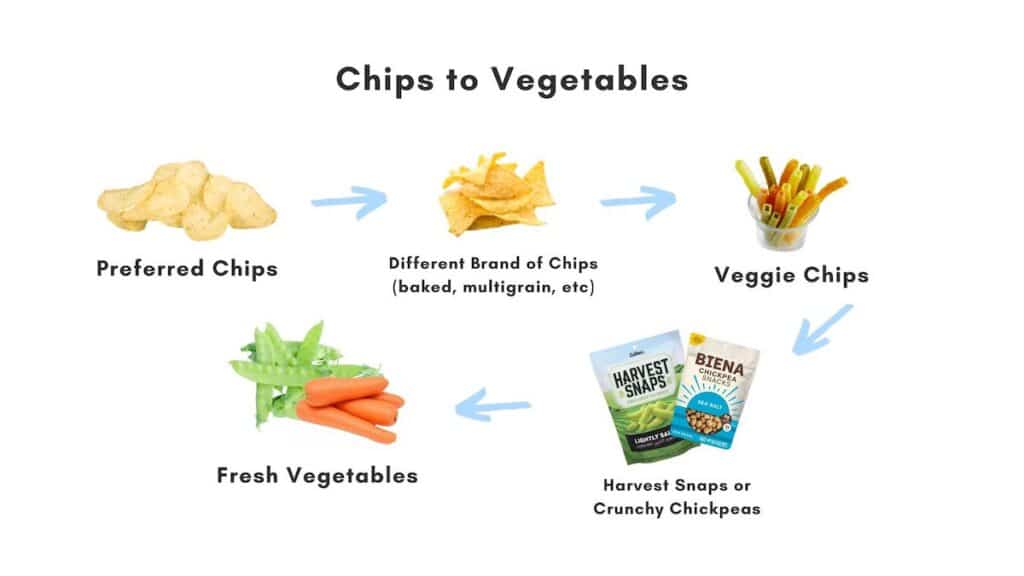
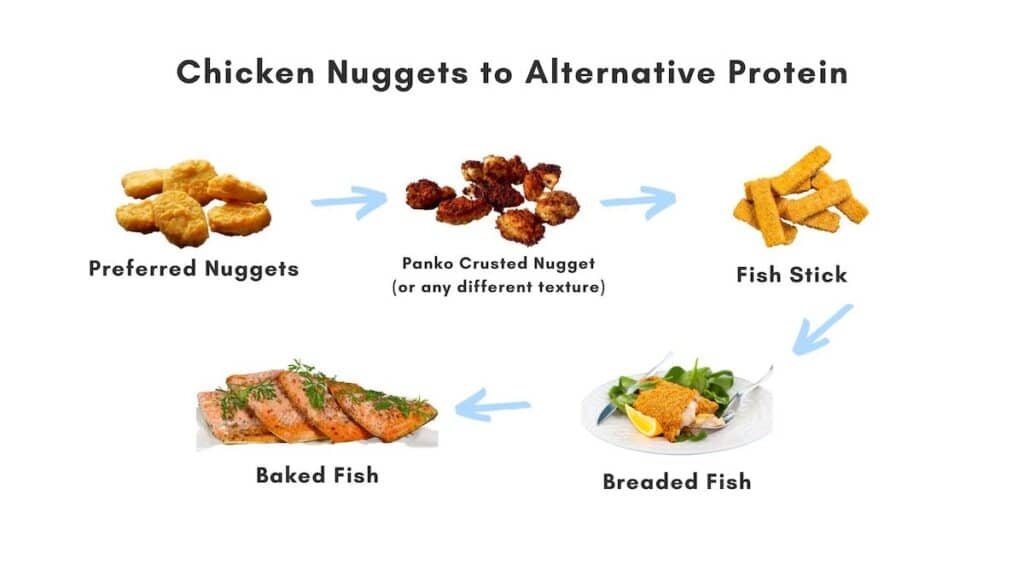
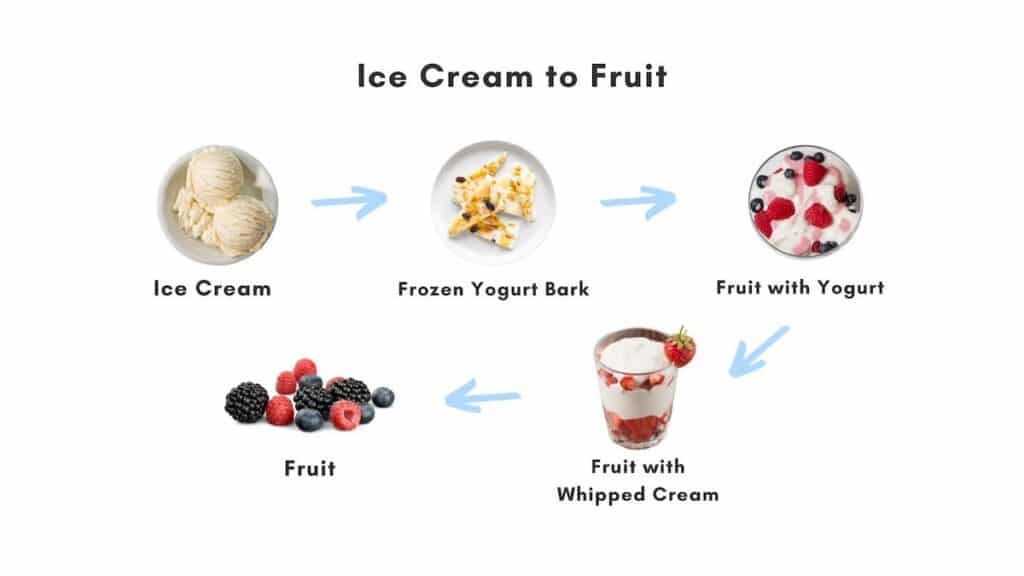

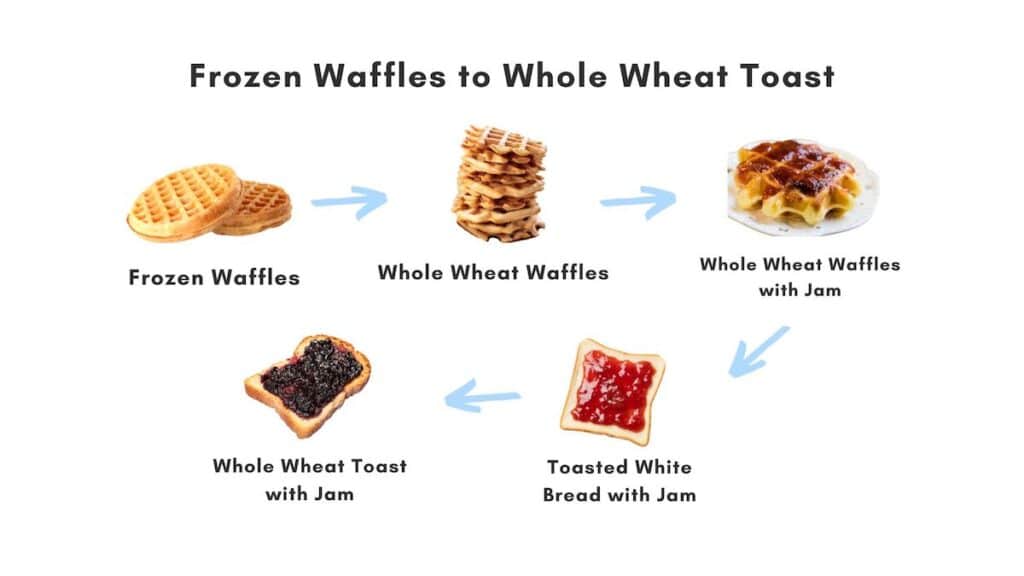
Troubleshooting Methods
If your child is not responding well to food chaining and continues to reject new foods, it’s okay! We might need to take the process a little slower and use some of these troubleshooting tactics.
Change the Environment, Not the Food
Sometimes it’s too overwhelming for children for their food options to constantly change. If they remain hesitant to small changes in food, try offering the same foods with different plates, utensils, cups, etc.
Adjust our Expectations
The eventual goal of food chaining is to increase the variety of foods your child eats. However, there are small checkpoints on the way to that end goal.
For a food that was previously avoided, look for small signs of increased engagement. This can include allowing it on their plate, smelling, touching, or biting foods.
Use Preferred Sauces
Use your child’s favorite sauce to maintain some consistency between steps in the food chain. This is especially helpful when you are changing the texture of foods.
Try Again Later
There is no timeline to food chaining! If your child remains hesitant, slow things down and wait longer between changing foods.
We want to avoid adding unnecessary pressure to meal time. The priority should be maintaining your child’s neutral and stress-free relationship with food.
Seek Professional Help
If you are frustrated and overwhelmed with food introduction, you don’t have to go through it alone! I strongly encourage to reach out to a picky eating expert. Linking some of my favorite deititans below:
Jenny Friedman, Feeding Picky Eaters
Thalia Prum, family.snack.nutritionist
Brittyn Coleman, Autism Nutrition & Picky Eating
Final Thoughts
Food chaining can be an excellent method to expand your child’s diet and introduce new foods. The slow and step-wise approach helps combat any overwhelming feelings that prevent kids from trying new things.
If you are noticing that your child has become progressively more picky about their food preferences, food chaining might be right for you.
Start by assessing their current preferred foods, apply the 5 T’s of food chaining, and keep the chain going! There is no timeline or pressure.
If you found this post helpful, read more about the 3 ways to prevent picky eating before it starts.

Pingback: 3 Ways to Prevent Picky Eating (Before it Starts!)
Pingback: 20 High Protein Foods for Picky Eaters